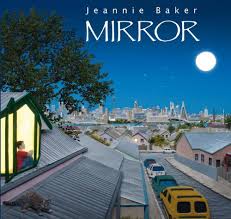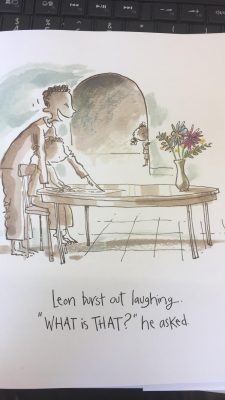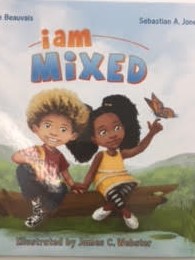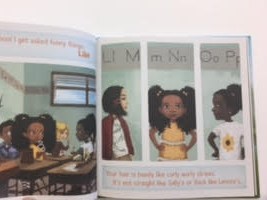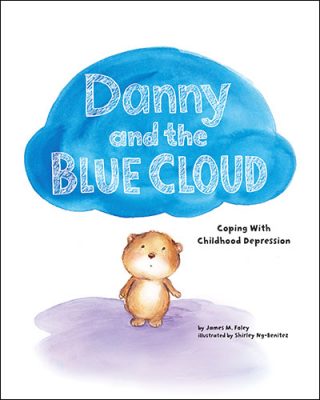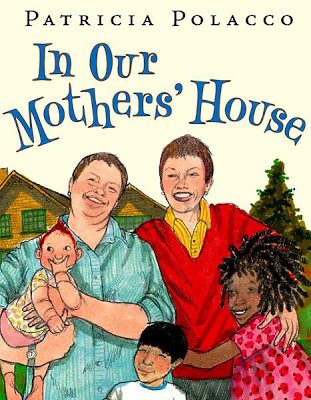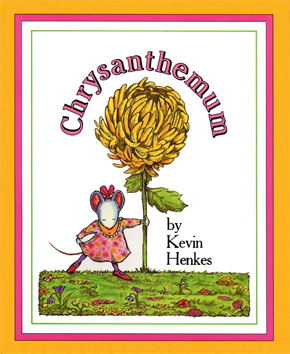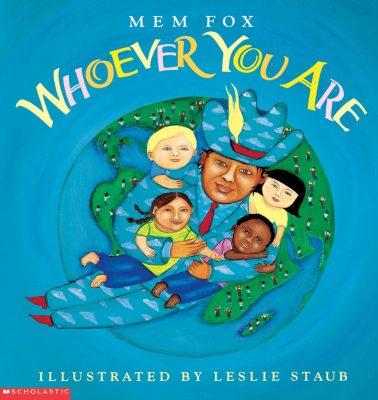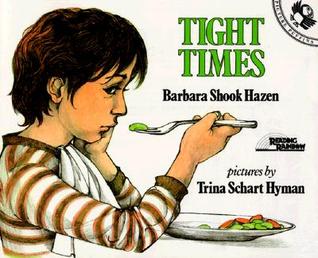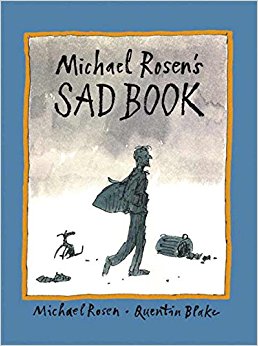
Title: Michael Rosen’s Sad Book
Author: Michael Rosen
Illustrator: Quentin Blake
Publisher: Candlewick Press (2004)
Pages: 26
Genre: Autobiographical
The book is written from the author’s point of view, as it is an autobiographical story. Rosen tells us about the sadness that he feels after his son, Eddie’s death. He describes his anger, his sorrow, how the loss of his son reminds him of his mother’s passing, and the things that he does to cope with his emotions, not always good things. But the sadness he feels for his son’s death isn’t the only reason for his sadness, sadness is also just there and he doesn’t know why. Rosen has ways of dealing with his mood too to try and redirect his thoughts. But this sorrow, this sadness is more than just a thing for Rosen, it’s a place that is everywhere that reminds him of his loss on his son’s birthday.
This book is very hard-hitting and requires a more mature audience. I say this because the topics are dealt with very frankly and not coded. As a reader, you can tell that this book was a catharsis for Rosen, another expression of the swirl of emotions he was and does feel, but it’s a touching expression that doesn’t necessarily make you feel hopeful, but you feel sympathetic.
The illustrations serve the narration well, because of the sort of scraggly nature of the drawings they can be light-hearted and sweet as they can be distorted and wicked. The first image is a colorful portrait of Rosen where he is happy, but he readily admits this is a false happiness, something that he feels he has to put on rather than feel. The corresponding image on that next page is Rosen as a dark gray figure frowning with mangled eyes, this is how he really feels, and he tells us it is because his son Eddie has died.
He remembers his son, with several illustrations framed like a scrapbook filled with photos, they are colorful and lively, except for one blank photo. Rosen describes that sometimes he’s not sad, but angry. Angry at how his son could go and die like that, after all he loved Eddie very very much, but Eddie went and died anyway. Sometimes Rosen just wants to talk about it, to anyone, but sometimes he doesn’t want to share his pain because it is his and no one else’s. Sometimes he screams in the shower, or bangs things on the table, makes goofy sounds or teases the cat. Other times, he is just sad. So, Rosen does things to divert his attention. He does something that he can be really proud of or does at least one fun thing, and reminds himself that being sad does not make him bad. Rosen demonstrates for us by explanation that there are many different ways to cope, some are goofy, some are scary, some are cruel perhaps to one’s self, perhaps to others. But, the sorrow that you feel doesn’t make you a bad person, maybe it just makes you a person.
Rosen asks where, when who or what is sad? He tells us, Sad is anywhere, anytime, and anyone. As for what, he shares a poem: “ Sad is a place that is deep and dark. Like a space under the bed. Sad is a place that is high and light. Like the sky above my head. When it’s deep and dark I don’t dare go there. When it’s’ high and light, I want to be thin air.” Somewhat more of a positive, a reader gets the sense that Rosen is letting others know that it’s okay to be sad because this feeling has no demographic, it affects all ages, anytime, anywhere, and sometimes it makes us want to disappear, it makes us want to disappear into thin air.
The illustrations drawn on the last 4 or 5 pages are unframed and sparse, they feel like fleeting memories, as they likely are for Rosen. Memories of mother, but mostly his son and the things they would do together and the quirky things that made his son, his son. The words read as tender remembrances of fun and good times, which makes it all the more sobering to know that, although tender and warm, they carry a certain sting of loss with them. The penultimate page is a memory of a birthday party, Rosen tells us he loves birthday parties, even for other people. Nothing can be more poignant that the last words of the book “Happy birthday to you…and all that. And candles there must be candles.” followed by an image of Rosen looking at a photo with one candle. The candle is at the forefront of the images, it burns bright orange and warm yellow, with Rosen in the back, small and gray. His figure brightened by the fire of the candle. I’d like to think the ending is hopeful in this way. Although Rosen is gray, sad, and small he is illuminated and warmed by the light of the candle, by the light of the happy memories of his son.
